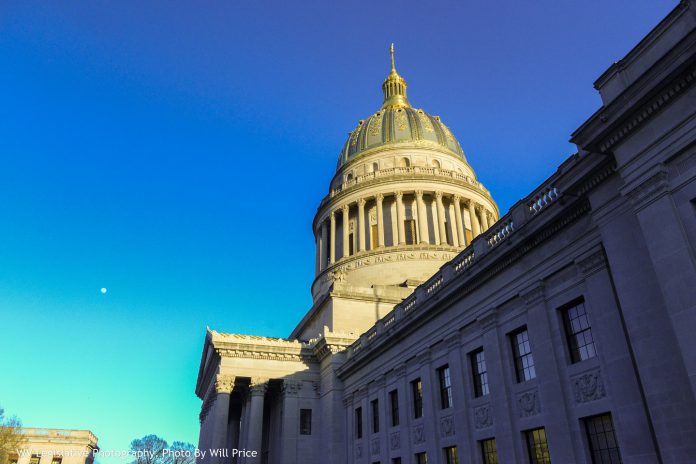Far below the top of the Capitol dome, nestled in the courtyard flanked by the East and West wings, sits a rather modest bell. There is no tintinnabulation on the quarter-hour; no tolling for the turn of the day. The one-ton, 12-foot-around hunk of copper and tin sits silent most of the time. The only distinguishing mark is an inscription near its top:
PROCLAIM LIBERTY THROUGHOUT ALL THE LAND UNTO ALL THE INHABITANTS THEREOF LEV. XXV X. BY ORDER OF THE ASSEMBLY OF THE PROVINCE OF PENSYLVANIA FOR THE STATE HOUSE IN PHILADA
PASS AND STOW
PHILADA
MDCCLIII
On first glance, the words have little to do with the Mountain State. A quote from Leviticus 25:10. The names of the two foundry workers who recast the bell – John Pass and John Stow. The year 1753 in Roman numerals. But the bell sitting in front of the West Virginia Capitol is relevant, for it invokes the spirit of its counterpart in Philadelphia, the Liberty Bell.

The first time the Liberty Bell was rung in 1753, it cracked and had to be recast. After being recast yet again to restore the proper sound, it hung in the steeple of the Pennsylvania State House (now known as Independence Hall), where it would stay until the American Revolution. As the British approached Philadelphia, it was hidden under a church in a town north of there. After the war was over, it sat in storage for seven years until a new steeple was built. In 1787, after being rehung, it rang to celebrate the ratification of the new Constitution.
The hanging of the replica Liberty Bell in front of the Capitol was a little less eventful, but no less appreciated. The replica was one of 53 produced in France and given to the United States government in 1950. It was presented to the state that year in commemoration of a U.S. Savings Bond drive – “Save for your independence,” the campaign’s slogan instructed. When it was first brought to West Virginia, it toured the state until finally resting upon the grounds of the Capitol Complex. It once set on the steps on the north side of the Capitol but has since been moved to its present location.
The original Liberty Bell was rung as a way to mark special occasions, both celebratory and somber. Contrary to what the plaque above the replica at the Capitol says, many historians doubt that the Liberty Bell was rung in 1776 to celebrate the signing of the Declaration of Independence because the steeple was in disrepair. However, it did ring in 1775 to announce the Battle of Lexington and Concord – the Shot Heard ’Round the World. The Liberty Bell was used to mark the deaths of several Founding Fathers: Ben Franklin, George Washington, Alexander Hamilton, John Adams and Thomas Jefferson.
Likewise, the West Virginia bell tolls but seldom. Every year, it is rung on Martin Luther King, Jr. Day to honor the late civil rights leader. It has been used for somber events, such as the anniversary of the September 11 attacks. Its tone – identical to the one produced by the bell during the 18th century – rings loudest through silence, just as light shines brightest in darkness; a solemn reminder of West Virginia’s resolve in the face of catastrophe.
The West Virginia Liberty Bell does differ from the Philadelphia bell in one major regard. On Feb. 27, 1846, the original bell rang for hours in honor of George Washington’s birthday. As it rang, a crack that had previously been repaired reopened and rendered the bell unusable. The bell has never been rung since, but the crack has become a distinctive part of the Liberty Bell. The replica does not bear this crack but is instead based on the original design of the bell.
Reproductions of the Liberty Bell can be found throughout the nation and the world – there are replicas in Belgium, Germany, Israel and Japan. Many of these, like West Virginia’s, sit in or near capitol buildings and state houses. Each one bears the same message as the original and the replica in West Virginia:
“PROCLAIM LIBERTY THROUGHOUT ALL THE LAND.”
And so they oblige.

